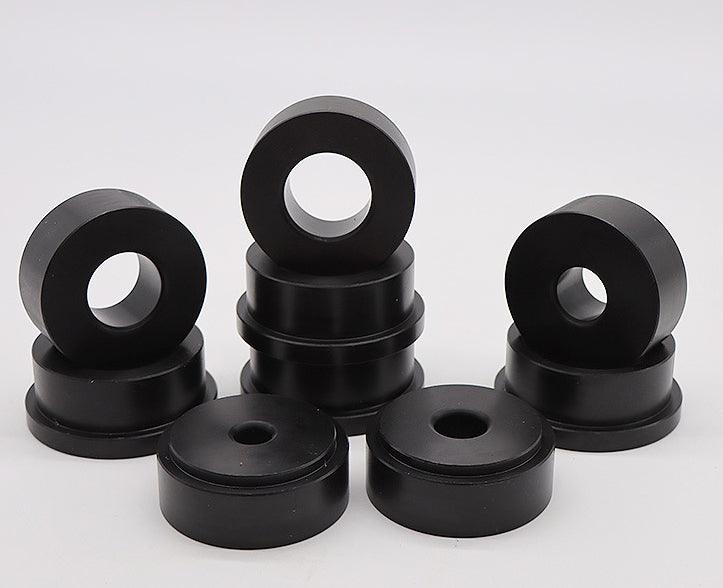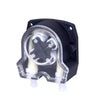Ultra High Molecular Weight Polyethylene (UHMW) is an advanced plastic polymer known for its outstanding wear and abrasion resistance. Its unique properties make UHMW plastic ideal for high performance under demanding industrial conditions, revolutionizing applications across manufacturing, engineering, and technology sectors.
With unparalleled durability, impact strength, and low friction coefficients, UHMW parts outlast metal, rubber and other materials by substantial margins. This blog post explores the significant role of this 21st century “super-plastic” in driving innovation from heavy machinery to cutting-edge aerospace technologies.

Understanding UHMW Plastic
UHMW owes its game-changing credentials to an extremely long molecular chain that lends unmatched mechanical properties. Its high molecular weight makes the material harder for chemicals to penetrate while facilitating slippery surface characteristics.
Specifically, UHMW plastic demonstrates:
- Extreme durability: Rated on the Rockwell scale for hardness, UHMW can withstand permanent deformation better than aluminum and resilient engineered plastics.
- Wear resistance: With a very low coefficient of friction, UHMW shows negligible property variation over time even under continuous dynamic friction.
- Lightweight strength: UHMW demonstrates a tensile strength exceeding other thermoplastics in its class, capable of bearing high loads.
- Impact resistance: High elasticity gives UHMW shock-absorption and crack prevention qualities on par with rubber polymers.
- Corrosion resistance: UHMW is unaffected by water, acids, bases, polar solvents and electrolytic environments making it last longer than metal parts.
- Low moisture absorption: Eliminates dimensional changes due to humidity and high temperatures.
These properties enable UHMW to outlive and outperform conventional materials across mechanically intensive industries.

UHMW in Machinery Parts and Equipment
Owing to its self-lubricating and wear-minimizing traits, UHMW is ubiquitous in factories and industrial machinery. As a bearing material UHMW enhances performance longevity in conveyors, bottling plants, meat/poultry processing equipment and heavy mining tools.

UHMW also serves key functions in:
- Gear surfaces: Replacing metal gears to damp running noise and prevent wear debris.
- Chute/hopper liners: Reducing buildup adhesion for smooth gravity-assisted material flow.
- Slide/guide strips: Providing a slick surface for minimal friction automated machinery motion.
In all such machinery applications, UHMW plastic improves efficiency and product lifecycles while eliminating the need for external lubrication. This allows industrial operations to slash maintenance overheads.
Versatility Across Industries
Beyond factory installations and processing set-ups, UHMW demonstrates invaluable utility across transportation sectors thanks to heat, chemical and electrical resistance:
Automotive: Engine timing belt tensioners, door checks and bumper pads leverage UHMW’s flexibility and dampening properties for smooth performance.
Aerospace: Low smoke toxicity makes UHMW suitable for aircraft interior components to improve passenger safety.
As engineered plastics go, UHMW also has uncommon tensile strength to reinforce load-bearing capability:
Material Handling: UHMW sheets line forklift truck beds as a resilient, anti-scratch surface capable of heavy loads.
Automation: Robot arms with UHMW joints last longer despite rapid motion, maintaining precision.
Thus UHMW straddles a rare niche - exceptional weight-to-strength capacity alongside self-lubricating characteristics.
Specialized Industrial Applications
Beyond general purpose roles, UHMW also serves niche industrial domains leveraging chemical, thermal and bio-compatibility:
Food Processing: As a FDA-compliant food contact safe substance UHMW keeps flavors intact without leeching.
Chemical Industry: Inert to extremely high or low pH environments, UHMW handles corrosive materials destroying steel or polypropylene.
Marine Engineering: Unaffected by saltwater damage, UHMW is perfect for ocean vessel components and port infrastructure.
Moreover, UHMW addresses eco-friendly needs:
Construction: Recycled UHMW plastic lumber makes sustainable building materials as a steel substitute.
Renewable Energy: Wind turbine gearbox bearings use UHMW bushing sleeves for minimal friction and emissions.

UHMW in Emerging Technologies
While dominating conventional manufacturing, UHMW also makes progress in advanced and specialized sectors:
Smart Textiles: UHMW fibers add high strength and protection to electronics-enabled fabrics.
Metal 3D Printing: The anti-abrasive base surface lets metal powder bed fusion machines print complex geometries.
UHMW thereby circumvents limitations of existing materials - an imperative for innovative design.
Case Studies: UHMW in Action
Real-world implementations prove UHMW outstrips regular plastics, rubber and metal:
Heavy Machinery: UHMW lining increased output in a Florida cement plant’s rotor bearings by eliminating material clogging.
Farm Equipment: Replacing steel with UHMW sheets in feed truck beds cut cow injury while raising carrying capacity.
Future of UHMW
UHMW has already surpassed legacy materials, but greater potential lies ahead:
Oil/Gas: Advanced polyethylenes like UHMW can withstand increasing offshore drilling pressures.
Mining: UHMW shows promise in heap leaching extraction by resisting mineral acids and abrasion from ore.
UHMW’s unique properties open vast possibilities for next-gen industrial technologies while optimizing existing infrastructure. This advanced plastic's durability, strength, machinability and lubricity will continue powering product innovation across manufacturing, transportation, energy and specialized sectors.

Unlock the Potential of UHMW Plastic for Your Projects: Your Gateway to Customized Solutions!






